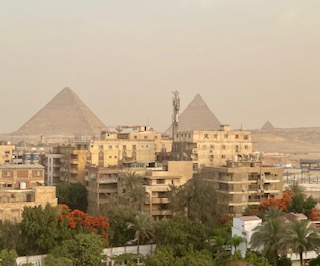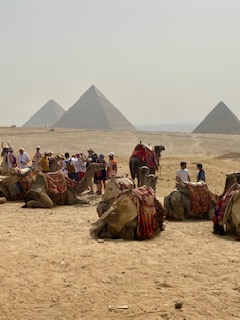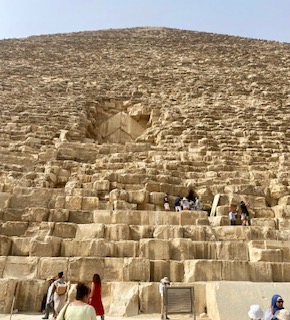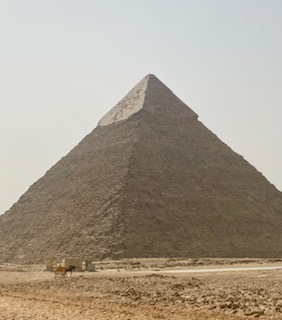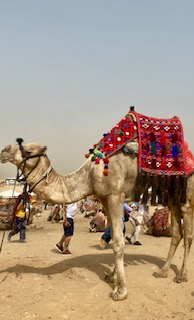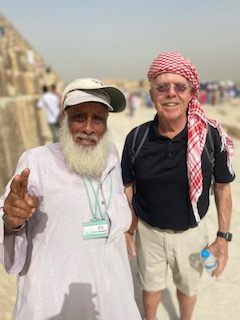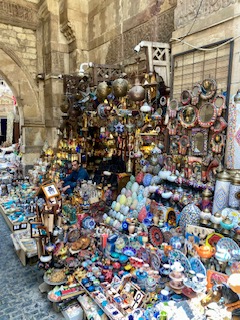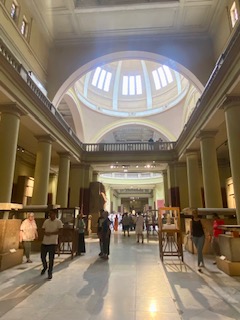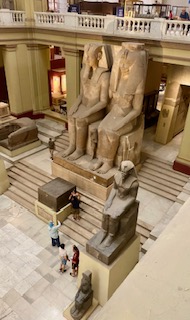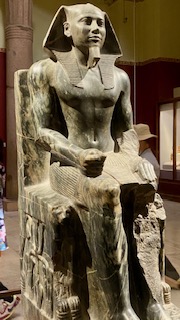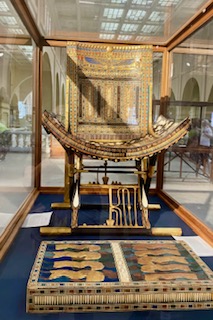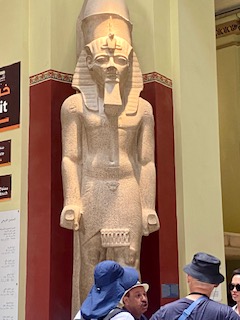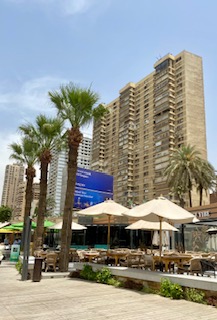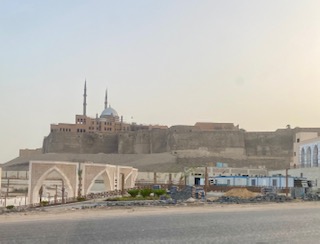We again went to our favorite grocery store around the corner and were able to get delicious food for breakfast. We found a sunny bench and enjoyed coffee, tea, croissants and even breakfast burritos. it was very enjoyable.
Afterward, our first stop of the day was a 25 minute walk to the Rijksmuseum, an amazing venue known for its extensive collection of Rembrandt Van Rijn and Vermeer paintings. The museum was founded in 1798 and first opened in 1885. In 2013, after a ten-year renovation at a cost of €375 million, it is the most visited museum in the Netherlands with record numbers of 2.2 million and 2.47 million visitors. It is also the largest art museum in the country. You could literally spend days there and not see its vast collection of art.
Suffice it to say, we spent the majority of our time there seeing the Rembrandt paintings of which The Night Watch is one of his most famous paintings, as well as The Jewish Bride. His attention to detail is unrivaled.
The museum also had a current exhibition of Franz Hals paintings. He was not appreciated until later in his life because he moved away from the traditional way of depicting subjects using fine brush strokes so the paintings looked almost like a photograph. Later, his brush strokes were considered “rough,” meaning that they were visible and more like the impressionists of his time. That school of painting evolved, with one of its most famous artists, Van Gogh among others. He also painted his subjects in more realistic poses, even smiling instead of looking grim, as was the custom. We enjoyed seeing the best of both painters. The next time we are in Amsterdam, we will visit again and hope to see more.
We are becoming acquainted with the area now, especially after walking over 20,000 steps today. There are many unique shops to see, even a rubber ducky store with hundreds and hundreds of ducks, of all sizes and characters. There was a store with only rainwear and items that are rain resistant, such as hats, backpacks, and purses. Many of the popular stores are here, as well a lots of designer brands. FYI, Amsterdam gets a lot of rain, but the people who use bicycles as their main mode of transportation, are undeterred by the rain.
Speaking of bicycles, everyone rides bikes here. The bike lanes are super highways and you have to make sure to look left and right before crossing any street. That is why you see mainly fit people here, of all ages. Some are on e-bikes but most are not. So, leg power is important.
Some bikes have a large attachment on the front, either to carry their children or for shopping. Parkinga car in Amsterdam is quite expensive, around €8 per hour, so bikes are definitely the way to go. Another option is a minuscule electric car that fits one or two smallish people, but don’t bring a large purse! It will not fit! They can park parallel or perpendicular to the sidewalk. Even Amazon delivers on a bike fitted with a larger box to hold the items. Jim noticed that the bike lanes are red because of the blood of the bikers when they crash! We never saw one crash or one accident. The bikes are like silent cicadas… everywhere you look!
One interesting experience we had today was seeing a glassed enclosed garage-sized building on the sidewalk of an up-scale row of homes. It seems that if you own a home/townhouse in this neighborhood, it comes with an underground parking place. You go to the computer screen on the outside of the “garage,” put in some information, pull your car into the building once the door has opened, go out of the garage, and press the correct buttons. Then, the car goes down to a lower level while on the elevator floor. Once down, there is some kind of mechanism that takes the car to the correct parking spot. It is magic (and I am sure not a cheap addition to the purchase of one of these beautiful homes but included in the price). We spoke with a couple of car owners about this. With such limited parking options, this is a little piece of heaven.
Getting back to our day, we had hours to relax before our end of day tickets to see the Anne Frank House. When I visited Amsterdam so long ago, you could go to any of the museums or tourist destinations either for free or pay a nominal amount when you arrived. Not so now… We booked visits and excursions many weeks in advance and the cost was far from nominal. If you try to be spontaneous, you will never get into any of the museums or tours.
When we arrived at 8:30 PM, there was a large group assigned to that time. We had a preliminary overview when we went on the Jewish Walking Tour a couple of days ago but nothing prepares you to see how eight people lived in an attic for two years, trying to keep quiet during the day so the factory workers below would not hear them and give their existence away. No walks outside. No looking out of the painted-over windows to have the sun warm their faces. Relying on a few people who would smuggle in food and other necessities, this was their lives.
When they were ultimately taken away, it was on the last train from Amsterdam, only days before liberation by the Allies. Anne’s father would be the only survivor. He searched for his family, only to find that they all perished, either in the gas chambers or from typhus. It still boggles the mind and I had heard many of the stories my whole life from my mother, a Holocaust survivor of Auschwitz.
The sun doesn’t set here until about 10:30 PM, so the walk back to our hotel is in full daylight. Another good day in Amsterdam. Logged over 26,000 steps!
